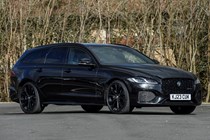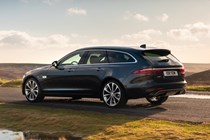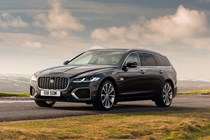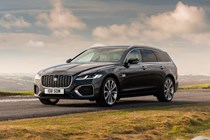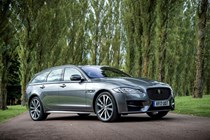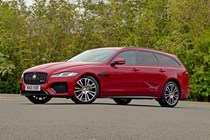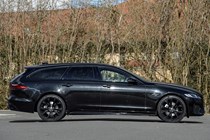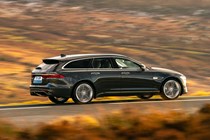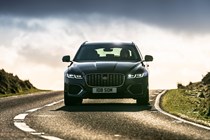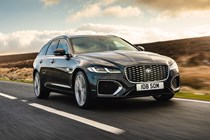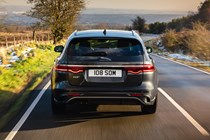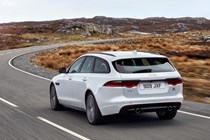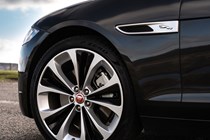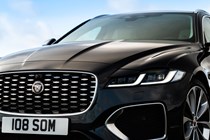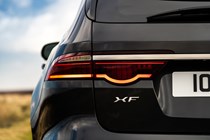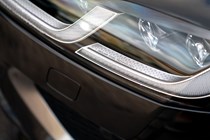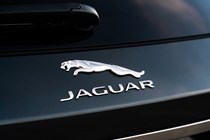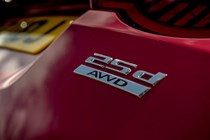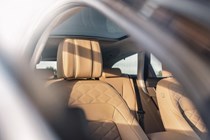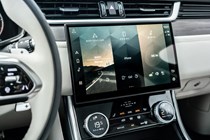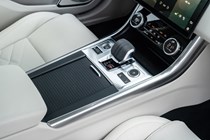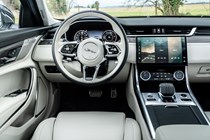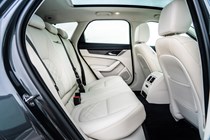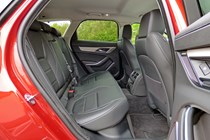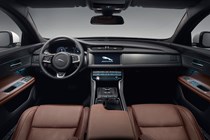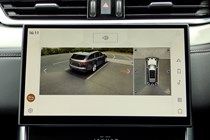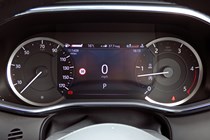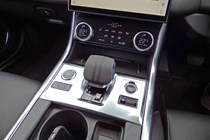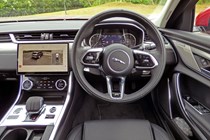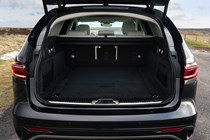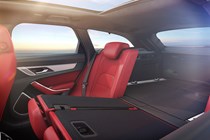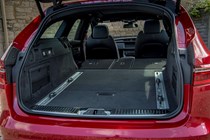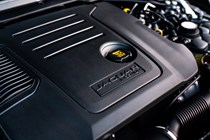Jaguar XF Sportbrake (2017-2024) engines, drive and performance
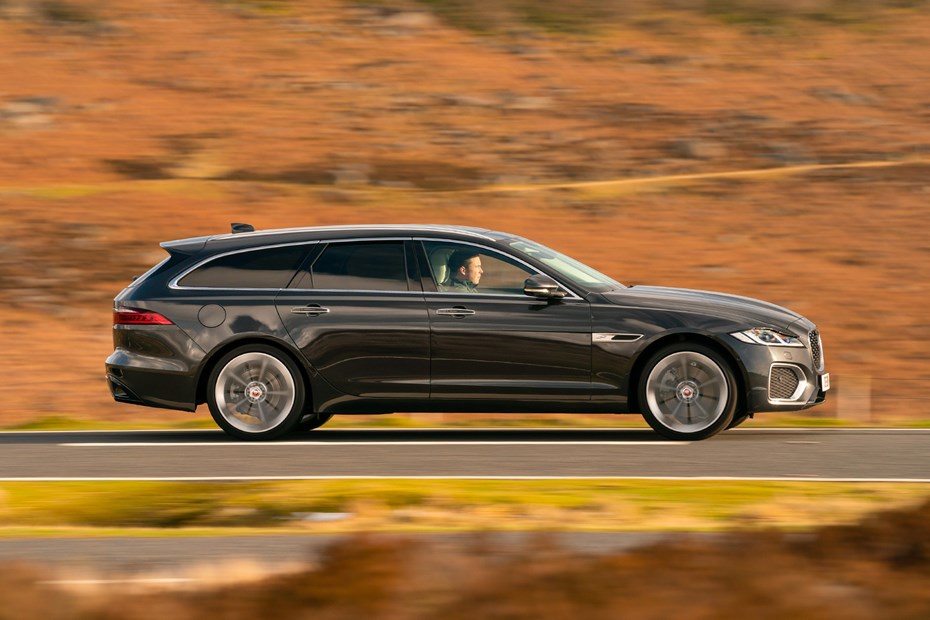
- Conventional line-up of combustion engines
- No hybrid or electric powertrain
- All-wheel drive available
Diesel engine
There’s currently a choice of two petrol engines and one diesel in the XF Sportbrake. Sadly, the brawny 3.0-litre D300 diesel is no longer available to buy new, so if you want one of those, you’ll have to seek out a used example. Likewise, the old, rather wheezy D180 and D163 have been sidelined leaving the mild-hybrid D200.
It’s a 2.0-litre, four-cylinder unit with 200hp, as the name suggests. Performance is brisk, with a 0-62mph time of 7.8 seconds, and it feels relatively punchy when accelerating down a motorway slip road. It’s not the smoothest or quietest of diesels, but it disappears into the background when you’re not accelerating.
An eight-speed automatic gearbox is fitted as standard. Every gear change is so smooth it’s barely noticeable; it holds onto gears a bit longer and shifts more quickly in Dynamic mode. You can also change gear manually using the tactile metal paddles on the back of the steering wheel, but the gearbox is so responsive they’re largely redundant.
The D200 is available with rear-wheel-drive or all-wheel-drive, which sends some power to the front wheels for extra traction on slippery roads. The D300 is AWD as standard.
Petrol engines
There are two petrol engines to choose from, both 2.0-litres in size with four cylinders. The difference is the power output – 250hp in the P250 and 300hp in P300. Both sound rather industrial, but they produce pretty swift acceleration: 0-62mph takes 7.1 seconds in the P250, 6.2 seconds in the P300.
Both petrol engines have the same eight-speed automatic gearbox as the diesel. The P250 is rear-wheel-drive; the P300 comes with all-wheel-drive.
Switching the drive mode selector to Dynamic sharpens throttle response and prompts the gearbox to change down sooner as you accelerate. It also lets the engine rev higher than normal before shifting up to access the engine’s power for longer. We found it makes the performance feel more eager and urgent. By contrast, Eco mode dulls responses and reduces power to improve fuel economy.
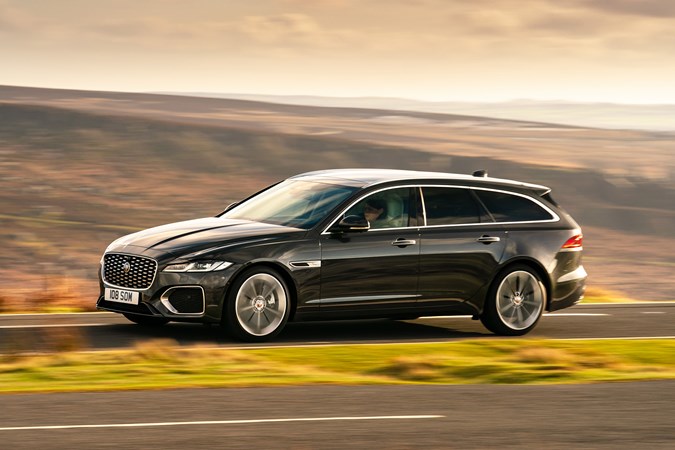
What’s it like to drive?
- Choice of rear- and all-wheel drive variants
- Strong grip levels and composed body control
- Handles and drives as a Jaguar should
The Jaguar XF Sportbrake offers a very similar driving experience to its saloon sibling, despite weighing an extra 115kg or so. Load up the boot with another few hundred kilos and it still displays impressive composure thanks to the standard rear self-levelling air suspension.
From behind the wheel, the XF Sportbrake doesn’t feel at all like the five-metre long, near-two-ton family-friendly hauler it is. Near-perfect weight distribution gives the car an agile and balanced feel; the ultra-direct steering responds to the slightest movement of the wheel, though not so quickly as to make the car feel nervous. You get a similar experience from both rear- and all-wheel-drive versions.
The steering wheel itself is quite wide and thin, sitting nicely in your hands. There isn’t a vast amount of feedback telling you what’s going on under the front tyres, but there’s more than you get from the likes of the Audi A6 and BMW 5 Series.
Body control is excellent with none of the swaying and bucking you can experience in some other cars on bumpy roads. There’s barely a trace of body lean in corners, either, and the brakes are strong and responsive.
Intelligent Driveline Dynamics works to eliminate understeer (where the front wheels lose grip in a corner) and selecting Dynamic from the choice of driving modes further firms up the suspension. Some models also have adaptive damper technology that constantly monitors and responds to the road surface, improving comfort and handling.
Put it all together and the XF Sportbrake is the most involving, most entertaining large estate to drive by some margin. And when you’re not pushing on, it’s easy, safe and stable in a way that’s very satisfying.


